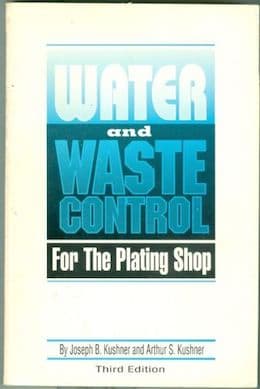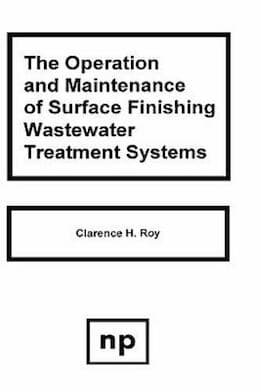
-----
Chrome / chromate pretreatment of steel for FBE/3PE
Q. I would like to know the function of chromate coating prior to FBE/3PE coating after grit blasting.
FAYYAZ AHMEDsteel pipe industry - Punjab, Pakistan
April 18, 2012
ACRONYMS:
FBE = Fusion Bonded Epoxy
3PE = 3-layer polyethylene (fusion bonded epoxy, polyethylene adhesion layer, polyethylene topcoat)
Hi, Fayyaz.
I know that chromate conversion coatings are used on aluminum and zinc surfaces, but I am not familiar with their function directly on steel. Could you please tell us your situation which motivates the question? Thanks.
Regards,

Ted Mooney, P.E.
Striving to live Aloha
finishing.com - Pine Beach, New Jersey
Ted is available for instant help
or longer-term assistance.
April 19, 2012
Q. Dear Sir
Thanks for your response.
We are 3PE coating applicator of steel line pipes ranging from DN 6 Inch - 48 inch.
After surface cleaning of steel pipes with shot/grit blasting, Chemetall Oakite 33 wash is done and then prior to main heater, chromate solution GARDOBOND 4504 PC or ALODINE NR 6012 is applied on blasted pipes prior to main heater. It serves as promoting adhesion of FBE coating with steel substrate.
Hope it clarify your concern.
- Punjab, Pakistan
April 24, 2012
A. Hi Fayyaz.
Now that you explain it, I do recall seeing chromic acid solution being used on steel wire to promote adhesion of a plastic coating for use in bra hooks and plastic coated paperclips, and similar coated wire products.
Thank you for refreshing my memory on this (it was decades ago). I understand that the acidity and oxidation power available from chromic acid is effective as a cleaning agent for anything missed by alkaline cleaning, without being corrosive. Unfortunately I don't know the actual chemistry of the reaction between chromate and steel surfaces except at this superficial level, and we both will have to rely on some generous reader to enlighten us :-)
Regards,

Ted Mooney, P.E.
Striving to live Aloha
finishing.com - Pine Beach, New Jersey
Ted is available for instant help
or longer-term assistance.
April 24, 2012
RFQ: We need information about nylon coating technology of bra wires, clips, hooks, adjusters. We need detailed information about this type of coating technology and the needs equipments and materials. Also we wonder about the alternative coating materials.
Vatan OZGULmetal plating+production - ISTANBUL, TURKEY
2003
Ed. note: This RFQ is outdated, but technical replies are welcome, and readers are encouraged to post their own RFQs. But no public commercial suggestions please ( huh? why?).
Treatment and disposal of chromate-based adhesion promoter
Q. We are 3PE coating applicators and using following product for promoting coating adhesion prior to pre-heating the steel line pipes:
CHROMATE: GARDOBOND 4504 PC - Made by Chemetall PLC, UK.
We want to dispose of the stocked quantity which is expired now. Can anyone suggest the best possible option to dispose of above products safely?
Regards,
Fayyaz
pipe Iindustry - Punjab, Pakistan
May 31, 2014
by Kushner & Kushner

on eBay (rarely)
or Amazon (rarely)
(affil link)
by Clarence Roy

on eBay or Amazon
or AbeBooks
(affil link)
A. Hi Fayyaz. This product contains hexavalent chromium, which must be reduced to trivalent chrome for disposal. Usually, the pH is adjusted to about 4 (lower than this would be faster, but will release more smelly and noxious sulfur-bearing gasses) and then a reducing agent like sodium metabisulfite is added. Hexavalent chrome has a strong characteristic "yellow" to "amber" color, and turns light green to blue when it has been converted to trivalent. Once the chrome has been reduced, raising the pH will cause the chrome to precipitate out so the solids can be clarified or filtered to separate them from the rest of the water, allowing the water to be discharged.
Different countries and locales may have different regulations about the discharge though. Good luck cousin.
Regards,

Ted Mooney, P.E.
Striving to live Aloha
finishing.com - Pine Beach, New Jersey
Ted is available for instant help
or longer-term assistance.
May 2014
June 2, 2014
Q. Dear Sir,
Thanks for your kind guidance.
Is it possible to burn chromate or dispose of by other means or simply drain by digging a deep excavation?
Please respond with your expert advise.
Regards,
Fayyaz
- Punjab,Pakistan
June 2014
A. Hi, Fayyaz. No, burning the chromate will only cause carcinogenic hexavalent chrome in the atmosphere. A deep excavation was considered a viable approach 60 years ago, but not today -- it will contaminate the drinking water and eventually will have to be dug up and treated anyway. Please try to learn from the very costly mistakes that have been made in other locales. Good luck.
Regards,

Ted Mooney, P.E.
Striving to live Aloha
finishing.com - Pine Beach, New Jersey
Ted is available for instant help
or longer-term assistance.
A. The way I used to treat such wastes; I'd bring the pH to about 2.5 with sulfuric, add sodium metabisulfite until a negative reaction is gotten from the carbazide color reagent, add a few pounds of ferrous sulfate ⇦ on eBay or Amazon [affil link] , then a few pounds of lime, with strong stirring. Then, bring the pH up to about 9.5, stir a few minutes, then add flocculant.

Dave Wichern
Consultant - The Bronx, New York
June 3, 2014
Chromating before color coating?
Q. Hi, probably I am asking a silly question. I am new to the business of coil coatings and during the research, we find that the surface pretreatment of the substrate will affect the coating's performance greatly. So I'd like help from the steel makers who know clearly the process during a metal-coating line and a colour-coating line.
My question is, after the steel is hot-dipped (or any method that coated the steel substrate with alloy coating), the manufacturer will treat the substrate by oiling to prevent it from corroding in short periods. However, if the coil is to be stored for a long time/shipped overseas/in a corrosive environment, they will choose chromic acid passivation, will they? And what is this chromic acid treatment different from chromating, the step in a colour coating line after alkaline cleaning?
Many thanks.
coil coating - Shanghai, China
July 27, 2014
Q, A, or Comment on THIS thread -or- Start a NEW Thread